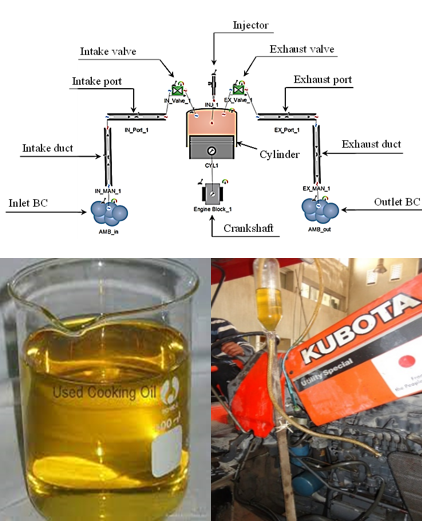
Recently, several earlier works conducted research works dedicated to replacing fossil-based fuels with environmentally friendly ones. The goal of the research is to construct a multivariate linear regression model for the attributes of a four-cylinder diesel engine fueled by biodiesel. In this context, the goal of the research is to structure a multiple linear regression example for characterizing a four-cylinder engine fueled by biodiesel. In fact, experimental research was conducted on an agricultural tractor equipped with a 4-cylinder direct-injection diesel engine. The biodiesel is made from waste frying oil without blending referred to as the oleic acid methyl ester (OAME) biofuel. The biodiesel was extracted through a chemical transesterification reaction. The four-stroke engine is tested for both pure OAME biofuel and conventional diesel. One-dimensional numerical simulations were conducted. A strong correlation between numerical and experimental data was observed, validating the numerical model. Using the engine model, in-cylinder pressure, heat release rate, in-cylinder temperature, and emissions including Carbon monoxide (CO), nitrogen oxides (NOx), and Carbon dioxide (CO2) were recorded across a broad range of engine operating speeds. Additionally, brake-specific fuel consumption (BSFC) and brake power were numerically calculated and compared to experimental data. The results showed that usage of the OAME as a biofuel could be a promising solution that enables similar performances with lower CO emissions compared to petroleum diesel particularly at low engine speeds.
Total file downloads: 33